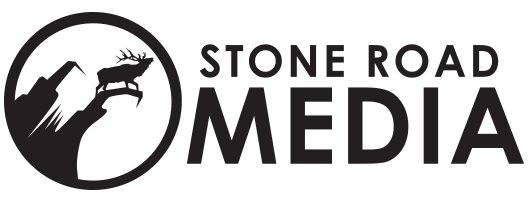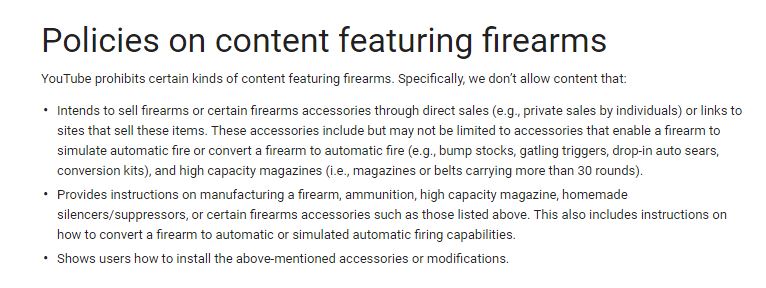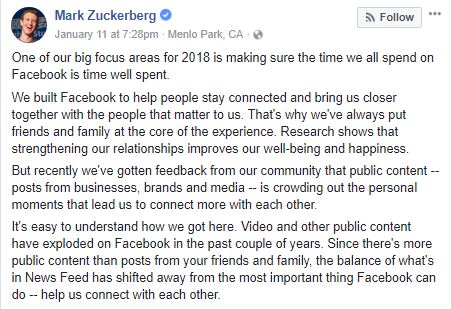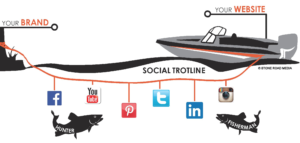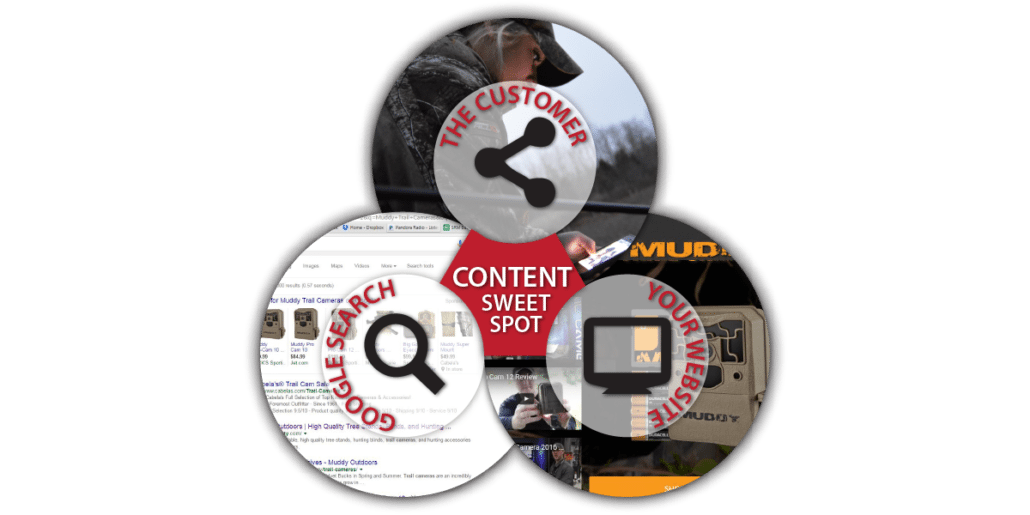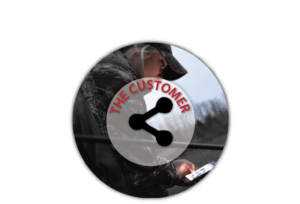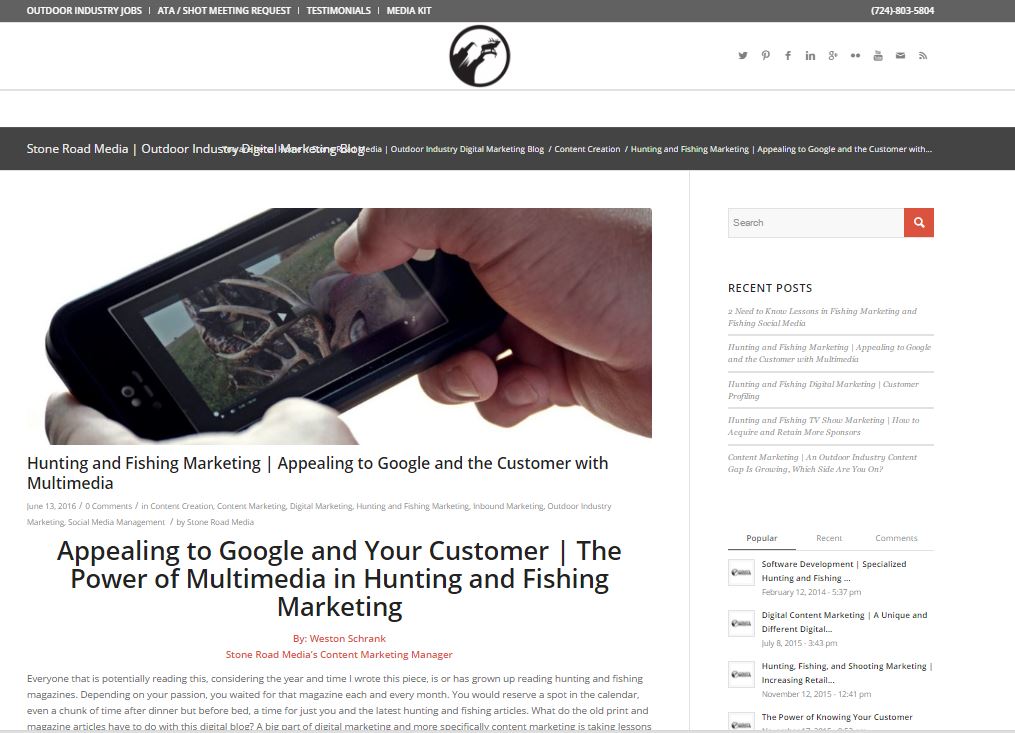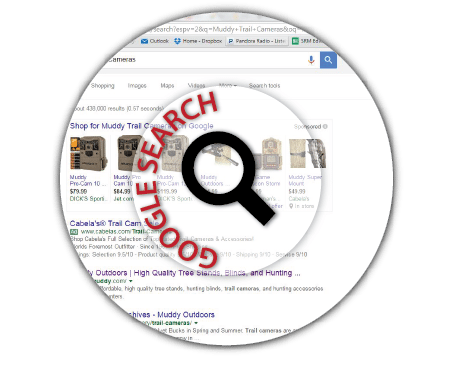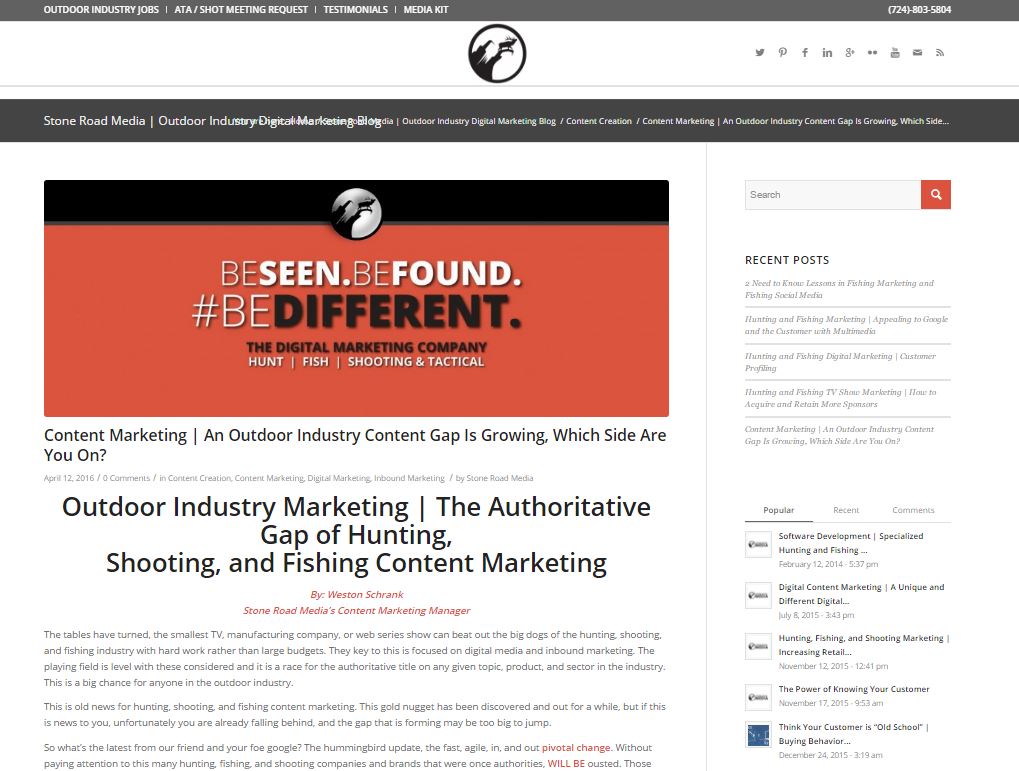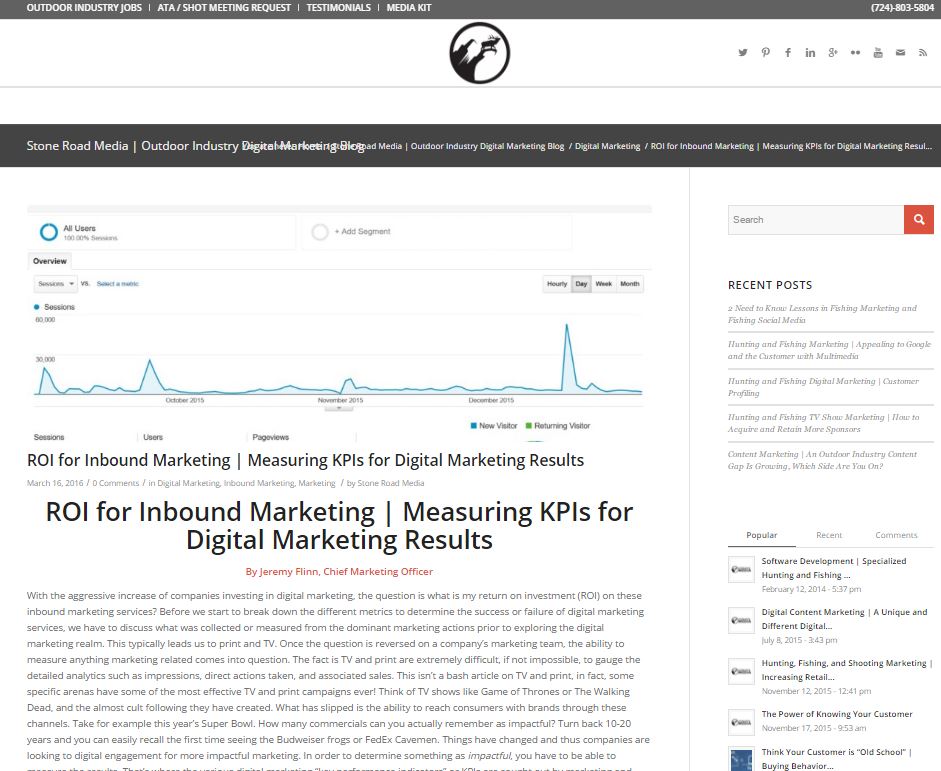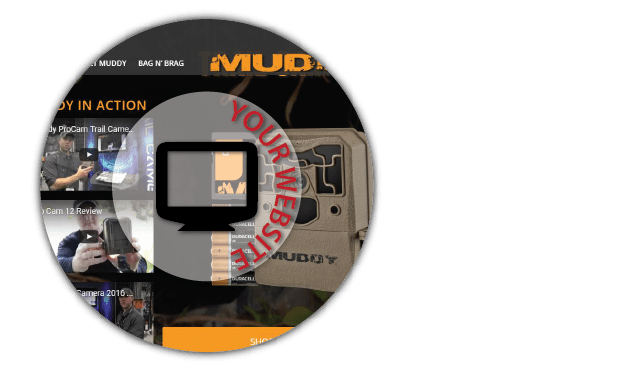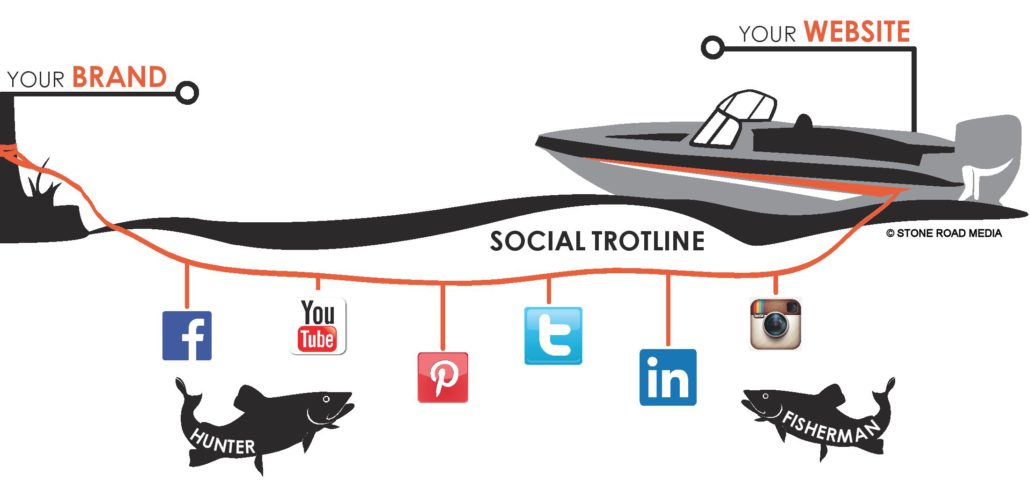Facebook, Now YouTube…How Should Your Business Adjust to Firearm Censorship?
YouTube’s Firearm Policy Restrictions | Marketing Solutions for Firearm Businesses and Brands
By: Weston Schrank, SRM Content Manager
It wasn’t until quite recently that the outdoor industry discovered YouTube’s restrictions on firearms related content. It has reached the industry’s consumers, brands, and businesses, infuriating many but alarming everyone. These restrictions have come to light not long after another disturbing update, Facebook’s recent algorithm changes. When both are considered, the compounding effect could, tear a firearm or outdoor industry business limb from limb. For those brands and businesses, this threat signals that it’s the time to adapt to a more stable and worthwhile investment for digital marketing.
YouTube’s Firearm Policy Restrictions
The Google-owned video platform YouTube is now tightening its noose on firearm-related content. YouTube’s Firearms Policy changes indicate restrictions on certain kinds of content featuring firearms. The specifics are below:
Essentially the policy works to block content that deals with specific firearm accessories and the instruction of manufacturing these specific accessories including ammunition. YouTube is now clearly censoring firearm-related content, which can be viewed by many as an infringement on constitutional rights.
Is This as Bad as it Sounds?
To the untrained eye, this current policy change might be a digital Armageddon for firearm-related brands. However, to most marketers and brands that utilize their social and YouTube channels correctly, this is only a small blip on the analytics as it relates to traffic acquisition. While certain videos that directly relate to the policy may be taken down or limited, most firearm and hunting related content is perfectly fine. In addition, those brands and marketers that use the channels correctly, as just one form of traffic acquisition, have barely paid attention to this policy update. They do not solely rely on generated traffic from these sources, trusting instead more stable digital marketing tactics and generating traffic directly to their website.
When this is considered, the only thing this YouTube firearm policy change reveals is those who are and aren’t using the channel correctly. This policy change may actually prove to be useful for firearm and hunting related brands and businesses. It might be the alarm they needed to finally look into digital marketing tactics and strategies that are safe from politically driven censorship of firearm and hunting related content.
So what do these tactics and strategies look like? Many brands and businesses may jump straight to employing paid advertisement, but as the next section is about to reveal…that may prove tough.
You Can Still “Pay to Play” Right?
In recent years, the entire outdoor industry has seen its fair share of politically driven limitations on hunting and weapon-related content. However, these recent updates could not arise at a worse time for those brands and businesses that struggle to use YouTube, and other social channels correctly. The outdoor industry, compared to other mainstream niche industries, has just recently begun forming a strong foothold in digital marketing. With businesses and brands now relying on traffic and online sales from both YouTube and Facebook, the recent policy change and algorithm change respectively could spell disaster for some. At this time many of these businesses would consider pushing marketing dollars towards paid advertisements to make up for the lost traffic. However, paid advertisements have, for a long time, been subject to even tighter restrictions, including profiling and restrictions on content.
Stone Road Media’s own Chief Marketing Officer and Co-founder, Jeremy Flinn, summed this up in a recent podcast.
“After Facebook’s algorithm change, marketers and brands have to “pay to play”. This means that in order to reach an audience, you have to create a social advertisement or put money (boost) behind a post. Even with an extremely good following and a great engaging piece of content, I estimate that you might only reach 10-15% of your audience organically. From there the numbers plummet to 5% for content that does not spark immediate engagement. Unfortunately, even once you agree to “pay to play” with social media advertising you’re now entering policies that are…you guessed it, restricted! Guns, knives, bows, arrows, and basically anything weapon oriented means that Facebook has a right to deny the advertisement of that content.” – Jeremy Flinn, Bent and Ballistic Outdoor Podcast
Facebook has profiled, restricted, and shut down pages relating to this genre of content, with other social platforms sure to follow. With Facebook and YouTube restricting not only organic content posting and engagement but advertising as well, it’s not hard to realize that the outdoor industry’s businesses need to start paying attention to using the channels and other forms of traffic acquisitions in their marketing mix.
Investing in More Stable Solutions
Unfortunately, digital marketing will not get any easier for outdoor industry and firearms-related businesses, especially when they rely on these channels for most if not all of their traffic to drive profitable consumer action. The only solution lies with where a brand and business lives– the website. If Facebook, YouTube, and soon to be other social media platforms are no longer viable sources of traffic, businesses must invest in other sources.
Fortunately, this policy change brings to light one valuable takeaway– If these policies are hurting outdoor and firearms-related businesses, they’re also hurting the same genre of consumers!
As hunters and shooting enthusiasts are limited to what they see on Facebook and YouTube, they will and already have started seeking the content directly. This means searching for it online!
Outdoor Industry Search Marketing
Catching this rapidly growing number of queries made each day on Google will not be easy. In fact, this form of traffic acquisition is by far one of the most complicated for businesses to harness. It requires smart and strategic use of content, content containers, SEO, and overall website optimization.
Most businesses and brands in the outdoor industry have become experts at short-term traffic acquisition. This traffic is easily achieved through paid advertisements and social media campaigns. In comparison, long-term acquisition through search marketing requires a more strategic approach. Once achieved, this transition away from short-term acquisition will lend brands and businesses more dedicated followers and audiences that create digital value…a value which cannot be censored or restricted.
First, brands must button up their website to be optimized for both content consumption and profitable consumer action. That means making sure the website is mobile friendly and ensuring that content, product, and service offerings fit mobile audiences. Second, with YouTube now restricting content, any video content can be placed on a video platform that can easily integrate into the website. YouTube will still be a source for traffic generation, especially when it brings great SEO value, but it can be costly sinking all video content into one channel for traffic. Steering away from YouTube might lose SEO value, so investing in the content container around the video (your website) is a more stable location for firearm and hunting related content. Even when traffic might be limited, the container itself is something a business contains and allows that content to be agile if traffic were to become limited from YouTube. Keep in mind this is not just simple video or playlist embed on a website, this is where the real chance at developing long-term value is created. This video content and any other content must be optimized at every level of creation. A strategy must be put into place before the content is released into short-term traffic campaigns, to maximize every bit for consumption, profitable consumer action, and now, most importantly, long-term traffic generation.
Long-term sustainability online is achieved through search marketing, investing heavily into not only the content but a brand and business’s audience. It is the the one thing the YouTube’s firearm restrictions and other similar restricting policies have revealed. This level of digital marketing can only be achieved by elevating content to its fullest potential through content containers, landing pages, and long-term campaigns while also leveraging any short-term acquisition that might actually get through restrictions.
Every hard-earned Facebook or YouTube post, video, or advertisement that actually gets through restrictions needs to be well worth the fight. Every ounce of traffic from these and many other traffic sources that are/may become restricted must be fully extracted in order to achieve organic traffic to your website. Traffic that can’t be censored or restricted!
A Hard Road Ahead
YouTube’s firearm policy restrictions, Facebook’s algorithm change, and other traffic restricting policies have revealed to the outdoor and firearms industry to finally invest into more strategic and dynamic digital marketing.
The outdoor industry is no stranger to politically driven policies and with the way recent history has panned out, we should and can expect further restriction on not only firearms content but hunting content as well. It’s not a question of if, it’s a question of when! Realize that these policy changes only limit brands and businesses that incorrectly use the channels, relying heavily on that traffic and not generating traffic from their website. Now is the time to make a move to develop your own platform and traffic to achieve freedom from censorship.
This solution will not be an easy road. With the outdoor and firearm industry now moving to more advanced digital marketing strategies like search marketing, the competition will become brutal. There is only so much Search Engine Result Page (SERP) real estate to fight for. Making the right moves now could create a head start on the competition.
Take the first steps with an outdoor digital marketing agency by your side, contact us today!
